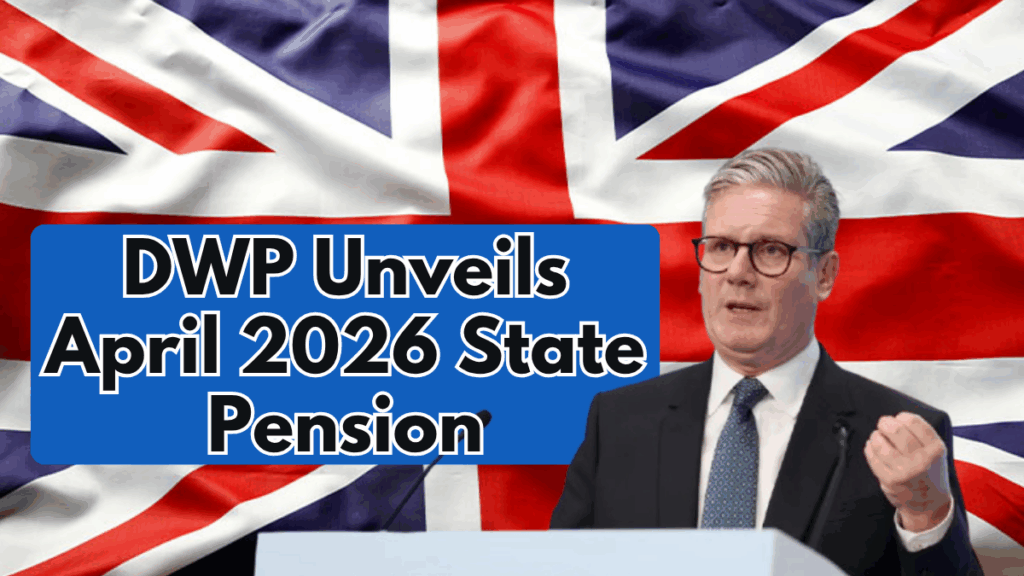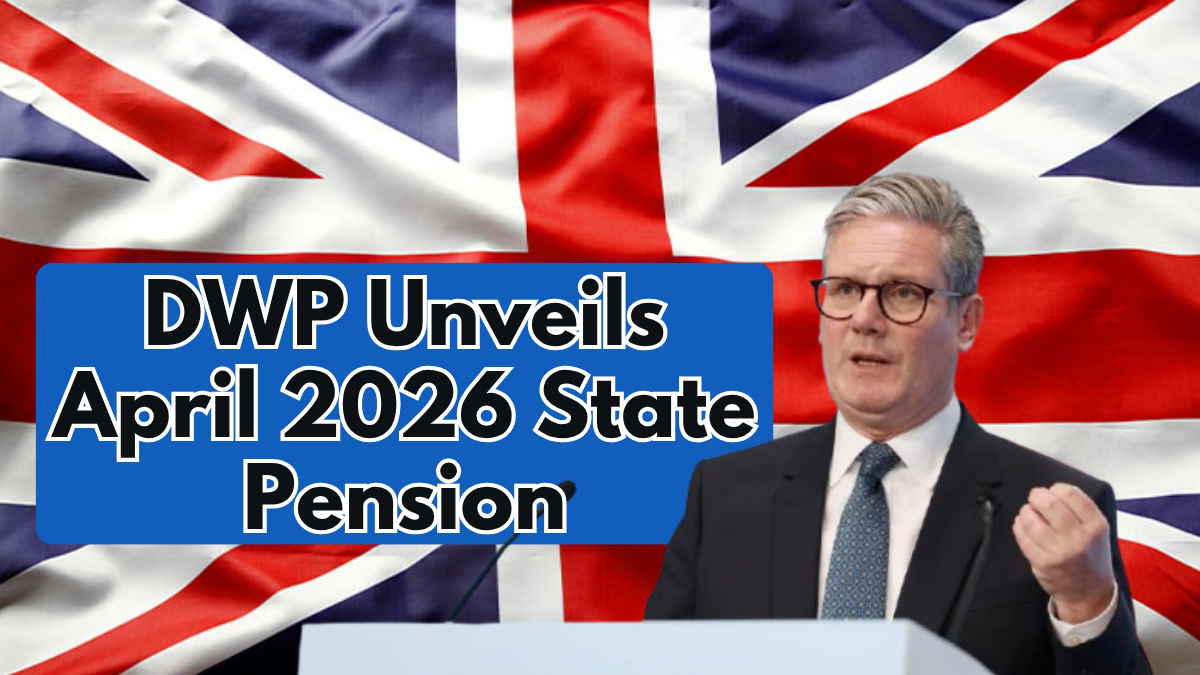The United Kingdom’s Triple Lock pension system has once again made headlines, reaching an all-time high as confirmed by the Department for Work and Pensions (DWP). This major update outlines how much retirees will receive under the State Pension starting April 2026, along with who qualifies for the new rates.
The Triple Lock has long been one of the most significant safeguards for UK pensioners, ensuring that payments rise in line with the highest of inflation, average earnings growth, or 2.5 percent. After years of economic fluctuation, rising prices, and political debate, the April 2026 adjustment represents one of the most substantial increases to State Pension payments in recent memory.

While this announcement brings relief to millions of pensioners, it also comes with new financial implications. As payments increase, more pensioners are expected to cross the income-tax threshold, placing them within the tax net for the first time. Furthermore, with the State Pension age rising to 67, some future retirees will have to wait longer to access these higher payments.
This article explains what the record-high Triple Lock increase means for both current and future pensioners, details the new payment figures, clarifies eligibility, and highlights key tax considerations for April 2026 and beyond.
What Is the Triple Lock and Why Does It Matter?
The “triple lock” is the mechanism used by the UK Government to calculate annual increases to the State Pension. Under this rule the pension rises by whichever is highest of: average earnings growth, inflation (Consumer Price Index) or 2.5%. The intention is to protect pensioners from falls in real income due to inflation or wage stagnation and to maintain purchasing power over time.
Rising cost of living, particularly for essential goods and services such as energy, housing and food, makes such increases especially important for pensioners living on fixed incomes. The triple lock is therefore central to ensuring that the State Pension remains meaningful.
Short Summary
| Item | Details |
|---|---|
| What is confirmed | A triple-lock increase for the State Pension from April 2026 based on higher of wage growth, inflation or 2.5% |
| Payment figures | New State Pension annual amount projected around £12,547.60; Basic State Pension projected around £9,614.80 (as examples) |
| Who qualifies | Those who reached State Pension age under the New State Pension system or the Basic State Pension system, subject to NI contributions and other rules |
| Tax implications | The full New State Pension may exceed the personal tax-free allowance (currently £12,570) pushing some pensioners into tax liability |
| Key concern | Some older pensioners on older pension schemes (e.g., Additional State Pension) may receive smaller increases or miss out on the full triple-lock benefit |
| Official site | https://www.gov.uk/state-pension |
DWP Unveils April 2026 Payment Figures
Recent forecasts and announcements show the State Pension is set to increase significantly from April 2026. According to analysis:
- The earnings growth figure used for the calculation is projected at around 4.8%.
- The inflation (CPI) rate used is around 3.8%.
- Because earnings growth is the highest, the triple lock increase is likely to reflect that higher percentage.
For example:
- The full New State Pension could increase to approximately £12,547.60 per year (around £214.30 per week) under the higher earnings figure.
- The full Basic State Pension amount may increase to about £9,614.80 per year (around £176.45 per week) for older claimants.
These figures illustrate what pensioners may receive once the update takes effect.
Who Qualifies for the New Rates?
Eligibility depends on which pension scheme you are under:
- New State Pension: For people who reached State Pension age on or after 6 April 2016. You normally need 35 qualifying years of National Insurance contributions to receive the full amount.
- Basic State Pension: For people who reached State Pension age before 6 April 2016, under the older pension system.
Both types benefit from the triple lock for the core pension amount, but there are caveats. Some pensioners also have additional pension components (such as the State Second Pension or other items) which may not be uprated under the triple lock in the same way. Some analysis shows that millions of pensioners in receipt of additional elements may miss out on the full benefit of the increase.
Tax and Financial Planning Implications
While a bigger pension benefit is welcome, there are certain important financial implications:
- The full New State Pension is forecast to approach or exceed the personal tax-free allowance of £12,570. For example it may reach around £12,548 or more from April 2026. That means some pensioners will face income tax for the first time on their State Pension if they have no other income.
- Pensioners with private pension income or earnings may find they are caught in the tax net more easily.
- Because income tax thresholds are frozen or slow-moving, there is the potential for more pensioners being liable for tax simply because their pension grew under the triple lock.
- Pensioners with older pension arrangements or smaller entitlement may not see the full benefit of the higher increase and may need to check whether their pension entitlement is complete and whether they have gaps in National Insurance contributions.
Given these factors pensioners are advised to review their pension forecast, check their National Insurance record, consider deferring pension if it boosts income, and review any private pension or savings income in light of tax thresholds.
Some Will Benefit More Than Others
While the full pension increases are widely reported, the reality is that not all pension claimants will benefit to the same degree. Reasons include:
- Those under the older additional pension schemes (such as the State Second Pension) may have that portion of their pension uprated by inflation only rather than by earnings growth.
- If you have a partial National Insurance contribution record, your pension will be pro-rated, so the benefit of a percentage increase is smaller in absolute terms.
- Pensioners who deferred their pension may have an increased pension but the deferred amount may not receive the same triple lock uplift.
Therefore, while the headline increase is welcoming, checking your individual forecast is critical.
What Pensioners Should Do Now
To prepare for the April 2026 increase pensioners are advised to follow these steps:
- Request your State Pension forecast: Check how much you will get, how many qualifying years of National Insurance you have, and whether you can top up.
- Check your National Insurance record: Make sure you have 35 qualifying years if eligible for the full New State Pension.
- Review your tax position: With pension increasing, check if you are likely to exceed the personal allowance and what tax you may pay.
- Consider deferring your pension: If you plan to delay starting your pension, check how that affects your total income and whether the increase is preserved.
- Check additional pension elements: If you are on an older scheme with extra pension elements, verify how they are uprated and whether you qualify for full increases.
- Stay informed of official DWP announcements: The final rate is confirmed in the Autumn Budget and you should rely only on official GOV.UK sources rather than speculative websites.
Risks and Longer-Term Challenges
The triple lock arrangement, while popular, presents challenges:
- Its cost to the public finances is significant, particularly when earnings growth and inflation are high.
- Some economists argue that sustaining large increases every year may not be affordable in the long term.
- Because tax thresholds are not rising at the same pace, pensioners face “fiscal drag” meaning the benefit of a larger pension is partially offset by increased tax.
- Future Government reviews may revisit elements of the pension system including the triple lock, eligibility age, and whether certain pension components get the full uplift.
Pensioners should be aware that while the triple lock is currently in place, future changes cannot be ruled out.
Official Site
For full and up-to-date information about the State Pension, annual uprating, eligibility criteria and how to claim, visit:
https://www.gov.uk/state-pension
Frequently Asked Questions
1) What is the triple lock and how does it work?
The triple lock ensures that the State Pension rises each April by whichever is highest of: average earnings growth, inflation (CPI) or a minimum of 2.5%. It protects pensioners’ incomes by matching broader economic changes.
2) What will the payment levels be from April 2026?
Estimates suggest the full New State Pension may reach about £12,547.60 annually (around £214.30 per week) and the full Basic State Pension around £9,614.80 annually (around £176.45 per week). Final figures will be confirmed in the Autumn Budget.
3) Who qualifies for the new payment levels?
Those who reached State Pension age under the New State Pension system (on or after 6 April 2016) or under the older Basic State Pension system. Qualification depends on National Insurance contribution history and other eligibility rules.
4) Will more pensioners have to pay income tax because of the higher pension?
Yes. With the State Pension rising and the personal tax-free allowance frozen, more pensioners may cross the threshold where income tax is due. Even those with only the full pension amount may become liable.
5) If I have gaps in my National Insurance record or get additional pension elements, will I still benefit equally?
Not always. Pensioners with incomplete contribution records receive less than the full entitlement. Additional pension elements (under older schemes) may be uprated differently, often with inflation rather than earnings growth, meaning the boost is smaller. It is important to check your individual forecast.
Conclusion
The triple-lock system has delivered a significant uplift to the State Pension from April 2026 and helps safeguard pensioners’ incomes against inflation and wage stagnation. However pensioners must prepare: check their contribution record, review their tax position, understand how their pension is constructed, and keep an eye on official announcements. While larger payments are positive, associated tax implications and uneven benefit across pensioner groups make informed planning essential. For reliable information always use the official Government website at https://www.gov.uk/state-pension.
For More Information Click HERE
